TOP ACTIVITIES DOMINICAN REPUBLIC
So you want to go on vacation to the Dominican Republic; an island jam-packed full of beautiful beaches and azure-colored water.
DOMINICAN REPUBLIC:
A SUPERB HOLIDAY DESTINATION FOR ALL

You may not realise though that the Dominican Republic has a landscape which lends itself to some of the most beautiful and exciting activities on offer, not just in the Caribbean region, but on the entire planet.
There’s a good reason why some parts of the movie Jurassic Park were filmed on location on the island. Famed for its prehistoric Amber stone, coffee and cacao, the Dominican Republic is a gem of an island, offering so many activities to choose from, you won’t be able to fit them all in during a week-long stay.
ACCOMMODATION CHOISES IN THE DOMINICAN REPUBLIC
With regards to accommodation in the Dominican Republic, you’ve certainly got some good choices of where to stay on this huge island. Perhaps you are thinking to stay in a place like Punta Cana, where the majority of accommodation is in large all-inclusive hotels with organised tours, but not much in the way of local life outside of your hotel, or are you going to be more adventurous/independent and head for ‘real’ towns like Cabarete or La Terrenas? Either way, the Dominican Republic is vast and beautiful, with a friendly population who love to share the adventures of their island with you.
DOMINICAN REPUBLIC ALL INCLUSIVE HOTELS
Many people staying in an all-inclusive are led to believe that it’s not safe to leave a resort, but this could not be further from the truth. This advice is given by all-inclusive hotels who have a clear motive; if you go out and about by yourself, they miss out on huge commissions from all the tours they would otherwise sell you, so it’s more profitable to keep you inside. Better still, steer clear of the all-inclusives hotels altogether and choose a smaller, privately owned hotel or guest house to stay in, with an owner who can share their extensive local knowledge with you on where to eat great food and visit fun places.
TOP ACTIVITIES DOMINICAN REPUBLIC
Rest assured, from someone who lived in the Dominican Republic (in Cabarete) for 12 years, getting out and about in the Dominican Republic will be rewarding, safe and fun, so think about organising a vacation around two or three different areas of the island.
 How about combining a few days of surfing or kiteboarding in a sporty, vibrant town like Cabarete, with a few days in the oh-so-peaceful La Terrenas, and even a couple of days in the Zona Colonial for some culture in the capital city, Santo Domingo? Or perhaps a hiking tour up Pico Duarte, followed by a truly relaxing few days on a deserted beach like Punta Rucia. Whatever you plan, be sure to get the very best out of this interesting, beautiful and diverse country.
How about combining a few days of surfing or kiteboarding in a sporty, vibrant town like Cabarete, with a few days in the oh-so-peaceful La Terrenas, and even a couple of days in the Zona Colonial for some culture in the capital city, Santo Domingo? Or perhaps a hiking tour up Pico Duarte, followed by a truly relaxing few days on a deserted beach like Punta Rucia. Whatever you plan, be sure to get the very best out of this interesting, beautiful and diverse country.
This article deals mainly with sports and adventure tours in the Dominican Republic, but if you are also interested in the culture, carnivals and festivals on offer on the island, have a look at page.
Here we have given you the top 20 must-do activities in the Dominican Republic, listing the sports activities and adventures on offer alphabetically. Hopefully, it will give you an idea or two when you are planning your vacation to the Dominican Republic.
Top 20 activities in the Dominican Republic
1. ATV TOURS
 Several Dominican companies run these fun ATV tours around various parts of the island. You will find one close to any tourist area like Puerto Plata, Punta Cana, Samana, etc. Many combine the fun of driving these 4×4 open vehicles with a little local culture, such as driving through the sugar cane fields or visiting local coffee growers.
Several Dominican companies run these fun ATV tours around various parts of the island. You will find one close to any tourist area like Puerto Plata, Punta Cana, Samana, etc. Many combine the fun of driving these 4×4 open vehicles with a little local culture, such as driving through the sugar cane fields or visiting local coffee growers.
Safety can be a concern as rigid rules on health and safety are rarely adhered to, but in fairness, this can often add to the fun! Duration of tours is generally 3 to 4 hours, but check with local operators.
2. CANYONING
The Dominican Republic is a huge island (it takes 7 hours to drive east/west). Right across the centre of the island mass are mountain ranges (with the highest peak in the Caribbean, Pico Duarte at 3098m).  With mountains come canyons and rivers and the Dominican Republic has more than its fair share of both.
With mountains come canyons and rivers and the Dominican Republic has more than its fair share of both.
If you are relatively fit and a little bit brave, these tours are not to be missed. With iconic names like The Big Bastard (about sums it up), The Magic Mushroom (a geological marvel) and Ciaguapa Falls, to name some, canyoning trips involve hiking (upwards) for a few hours and jumping, sliding and repelling all the way back down again.
Trips generally last the whole day and you will need non-slip shoes which can get wet. Your reputable tour operator will provide proper safety gear, including wet suits (the water from the mountains is cold), harnesses and helmets.
The best tours are in the Cordillera Septentrional, Puerto Plata region, so base yourself in the cool surf town of Cabarete to get the very best of the canyoning trips in the Dominican Republic.
3. CATAMARAN TOURS
Again, several providers based across the island offer catamaran tours of local waters. Some double-up as fishing adventures and others are more of a sunbathing and swimming cruise, often involving drinks and food. Notable operators are Tip Top or Freestyle Tours in Puerto Plata and too many to mention in Punta Cana. Your hotel will have local leisure cruise, fishing and booze-cruise information.
4. DEEP SEA FISHING
Both Puerto Plata and Punta Cana have deep sea fishing tours and charters on offer. High Z and Mahi Mahi Tours are the best on offer in Puerto Plata whilst Punta Cana tends to have more expensive private charters for hire.
5. SCUBA DIVING
Being a Caribbean island, bordered both by the Atlantic (North Coast) and the  Caribbean Sea (East and South coast), the Dominican Republic enjoys some beautiful, turquoise water, abundant with fish and corals.
Caribbean Sea (East and South coast), the Dominican Republic enjoys some beautiful, turquoise water, abundant with fish and corals.
There are many scuba dive schools operating on the island. Our pick of the bunch would be Merlin Dive school in Sosua (close to Cabarete) and Dressel dive school operating in Punta Cana and Puerto Plata. We chose these companies because of their European-style professionalism in operating; scuba diving needs to be taken seriously. More info at https://www.divecenter-merlin.com
6. EL LIMON WATERFALL
 In the Samana region, about half an hour from Las Terrenas, you will find El Limón waterfall. This trip is less extreme than the canyoning mentioned previously, or the 27 waterfalls (27 Charcos) we will mention later in this article.
In the Samana region, about half an hour from Las Terrenas, you will find El Limón waterfall. This trip is less extreme than the canyoning mentioned previously, or the 27 waterfalls (27 Charcos) we will mention later in this article.
El Limón is quite a spectacular waterfall, standing at a whopping 52m high. Getting to the waterfall involves a horseback ride of roughly 45 minutes, where you will get wet as your horse negotiates several river crossing points to reach the base of this magnificent waterfall. You’ll be offered this tour from locals whilst walking around the charming town of Las Terrenas but it’s worth sticking to the more established tour operators like Santi or Parada La Manzana as they have better guides and well-cared for horses. Walking is also possible, but add an hour or so to the trek.
7. HIKING PICO DUARTE
 We’ve already mentioned that the Dominican Republic is home to Pico Duarte, the tallest mountain in the Caribbean at 3098m high. If you are a fit and regular walker, this is a great choice to see the magnificent interior of the island.
We’ve already mentioned that the Dominican Republic is home to Pico Duarte, the tallest mountain in the Caribbean at 3098m high. If you are a fit and regular walker, this is a great choice to see the magnificent interior of the island.
Tours generally are 2 to 3 days and start at Jarabacoa. Tours are not cheap, but accommodation, meals and guides are included and generally break down to around $150 USD per person, per day.
8. HORSERIDING
It’s a fact that for many people, a beach holiday is not complete without a pony trek along the sand, or if you are a more accomplished rider, a canter through the shore-break.  All tourist regions offer horse-back riding tours from several sources.
All tourist regions offer horse-back riding tours from several sources.
Riding on the beach can be exhilarating, but we strongly recommend that you take a tour which goes inland and rides through some local towns and villages, along with river crossings through some beautiful valley scenery. Rancho Louisa y Tommy is one such company, based in Sabaneta de Yasica, close to Cabarete on the north coast. You can contact them on their Facebook page https://www.facebook.com/Rancho-Luisa-y-Tommy-430058250408145/
9. KITEBOARDING
Cabarete, on the North coast of the Dominican Republic is widely thought to be the kiteboarding capital of the world. Side-on steady winds and warm water combine to provide perfect kiteboarding conditions. The waters of Cabarete  Bay are full of the beautiful multi-coloured kites as they glide effortlessly through the water.
Bay are full of the beautiful multi-coloured kites as they glide effortlessly through the water.
Kiteboarding might look difficult, but actually, it’s much easier than it appears. A good kiteboarding school, such as LEK Cabarete, Kite Club Cabarete or Kite Club Punta Cana, will teach you in a one-on-one lesson with an IKO qualified kiteboarding instructor. Learning is not cheap, but it shouldn’t be as each kite equipment set used in lessons is valued at around $3000 USD and is easily damaged (kite crashing to the beach) during lessons. Don’t be tempted to cut costs in a kite lesson; it’s not worth the safety risk.
Poor instruction in a kite lesson can lead to very serious injury; the kites wield enormous power and it’s easy to get launched high in the air if you don’t move the kite in the correct way. With good instruction, it’s exhilarating and quick to learn; you can make great progress in 6 to 8 hours of lessons. A good kite boarding school will charge between $69 and $72 USD per person per hour of instruction.
10. LAGUNA DUDU & LUGANU GRI GRI
These two truly stunning azure lagoons of water are close to each other, on either of Cabrera along the North coast. You could combine a trip to them both in one day.
 Gri Gri is formed from a natural spring, but after an earthquake in 1952, the subterranean water rose up and formed a lagoon. Named after the Gri-Gri tree which grows in abundance in the surrounding mangrove forrest, tours go by boat through the lagoon, taking in the caves where thousands of Swallows nest. The boats often have glass bottoms, so you can really appreciate the quite incredible colour of the water beneath you.
Gri Gri is formed from a natural spring, but after an earthquake in 1952, the subterranean water rose up and formed a lagoon. Named after the Gri-Gri tree which grows in abundance in the surrounding mangrove forrest, tours go by boat through the lagoon, taking in the caves where thousands of Swallows nest. The boats often have glass bottoms, so you can really appreciate the quite incredible colour of the water beneath you.
El Dudu offers the same stunningly beautiful azure water (both Gri Gri and El Dudu look as though the water has been dyed, such is the vibrancy of the colour), but it’s more of a small lagoon for jumping into, with a zip line and ladders to aid a fast or slow decent into this most spectacular pool of water.
A boat trip on the Laguna Gri Gri lasts around an hour or so and you can spend as long as you like hanging out at El Dudu. A taxi from Cabarete to Cabrera will cost around $80 to $100 USD for a return trip, even if there are several people in the vehicle. Cheaper gua gua’s and carritos also go for a few pesos each, but expect a very crowded journey.
11. MONKEY JUNGLE
Just outside of Cabarete, you will find the Monkey Jungle & Zipline adventures.  Opened as a way to fund urgent free medical care for Haitians and Dominicans who previously had no access to any medical care, the Monkey Jungle is now a firm favorite on the North coast (base yourself in Cabarete or Sosua for this adventure).
Opened as a way to fund urgent free medical care for Haitians and Dominicans who previously had no access to any medical care, the Monkey Jungle is now a firm favorite on the North coast (base yourself in Cabarete or Sosua for this adventure).
Sadly Chuck and Candy, the founders of the project lost their lives in a small ‘plane in 2016, whilst returning from a humanitarian mission to deliver much needed supplies to Haiti. Their legacy lives on in the form of a really fun afternoon feeding the Squirrel Monkeys and racing down the ziplines. It’s great to know that while you enjoy yourself, the money you have paid to do so is going to such a great cause.
12. MOUNTAIN BIKING
We’ve already written of the expansive mountain ranges of the Dominican Republic, so of course, mountain biking is readily available through the Cordillera Central. In fact, cycling generally is huge in the Dominican Republic, with regular road races happening both within the major cities and between  them most Sundays.
them most Sundays.
Bike Map have several rides listed here on https://www.bikemap.net/en/l/3508796/
SEE WHAT CABARETE IS ALL ABOUT
(There’s a reason it’s called the adventure capital of the Caribbean)
13. PLAYA GRANDE BEACH & GOLD COURSE
Playa Grande is thought to be one of the most beautiful beaches on the North coast of the Dominican Republic and well worth a trip if you are staying in the region.  Traditionally a popular beach for locals every Sunday, this stunning beach is bordered by fisherman’s huts/restaurants. As soon as you arrive, you’ll be offered a simple table and chairs beneath the palm trees and delicious, BBQ’d fresh catch of the day.
Traditionally a popular beach for locals every Sunday, this stunning beach is bordered by fisherman’s huts/restaurants. As soon as you arrive, you’ll be offered a simple table and chairs beneath the palm trees and delicious, BBQ’d fresh catch of the day.
Beware the shore break on some days, it can be quite heavy, but generally, kids who are good swimmers will love playing in the waves whilst you lie on the golden sand.
The renowned golf course designer, Robert Trent Jones Sr. designed two golf courses on the North coast. Playa Dorada and Playa Grande. Playa Dorada (just outside of Puerto Plata) is a nice, quaint little course but Playa Grande is the masterpiece; a links golf course with stunning holes atop the cliffs, all overlooking the magnificently blue Atlantic ocean.
Whilst on the subject of golf in the Dominican Republic, there are enough great courses on the island to plan a multi-centre golf vacation, including the world-famous Teeth of the Dog golf course in Casa De Campo (south coast). There are no less than 26 golf courses to choose from in the Dominican Republic, making it the best Caribbean island choice for a golf vacation!
14. SNORKELING
Several locations on the island are great for snorkeling. Sosua, the next town  to Cabarete, has a stunning bay and snorkelling trips are leaving from the bay for a short trip to the reefs in front of the beach. Merlin dive centre are one of the companies who will organise a local boat to take you into the bay to where you will be able to swim with and feed the fish. If you are staying in Puerto Plata or in Punta Cana, your resort hotel will have a list of the companies they use for their snorkelling trips.
to Cabarete, has a stunning bay and snorkelling trips are leaving from the bay for a short trip to the reefs in front of the beach. Merlin dive centre are one of the companies who will organise a local boat to take you into the bay to where you will be able to swim with and feed the fish. If you are staying in Puerto Plata or in Punta Cana, your resort hotel will have a list of the companies they use for their snorkelling trips.
15. SUP (STAND UP PADDLE BOARDING).
This popular sport is available in several locations. Las Terrenas and Punta Cana both have flat water so if you like to paddle around without waves, you will be very likely to be able to rent an SUP at your local beach.

The North coast is where the majority of the waves are, so if you are able to surf waves with an SUP, head for Cabarete where you can find some great waves on the reef in the town’s main bay. There’s also flat water in the bay of Cabarete. Bear in mind that SUP boards are banned at the surf beach of Encuentro for safety reasons.
Sup’ing (or kayaking) down the rivers in the Sabaneta de Yasica area, close to Cabarete, is very popular. Check with Kayak River Adventures for more details.
16. SURFING
Bearing in mind the fact that the Dominican Republic is bordered by two different oceans (the Caribbean Sea and the Atlantic Ocean) there is a distinct location for good surfing and that is on the Atlantic side of the North coast.  The Caribbean side (Punta Cana, Casa de Campo, etc) is flat pretty much year-round, so if you are coming to the Dominican Republic to surf, you must head to the North. In this regard, if you are a surfer, fly to Puerto Plata (POP) and not to Punta Cana (PUJ) as it takes 6 hours to drive north from PUJ.
The Caribbean side (Punta Cana, Casa de Campo, etc) is flat pretty much year-round, so if you are coming to the Dominican Republic to surf, you must head to the North. In this regard, if you are a surfer, fly to Puerto Plata (POP) and not to Punta Cana (PUJ) as it takes 6 hours to drive north from PUJ.
Encuentro is the main surf beach of the North coast. Situated about 10 minutes drive from Cabarete, it has several different surf peaks to suit all levels of surfing. The best surf for expert surfers is to be found between November and April, with the summer months May to October, being better for smaller waves.
There are many other surf breaks along the North coast; you can find more information on surfing in the Dominican Republic on this page
Down at Encuentro beach there are a number of local surf schools who will give you surf lessons but if you want to take a more intense surf course, then stay somewhere like Swell surf camp, where you can be immersed in a complete surf camp experience, with lessons, airport pickups, meals and a vibe with other surfers to enjoy.
Macao Beach, just north of Punta Cana, does have some rather limited shore breaks at certain times of the year. You will find surf schools located on the beach there when the surf is up.
17. 27 CHARCOS WATERFALLS
 We’ve already spoke about the canyoning trips, but there’s another amazing waterfall experience close to Puerto Plata on the North coast. The 27 Waterwalls (local name, 27 Charcos), is a breathtakingly beautiful hike, walking up no less than 27 linking waterfalls and then descending by sliding and jumping.
We’ve already spoke about the canyoning trips, but there’s another amazing waterfall experience close to Puerto Plata on the North coast. The 27 Waterwalls (local name, 27 Charcos), is a breathtakingly beautiful hike, walking up no less than 27 linking waterfalls and then descending by sliding and jumping.
Historically, this trip did not enjoy good safety standards and very sadly, after the deaths of 3 people at the waterfalls some years ago during heavy rains, a rapid revision was made of safety standards. Guides were properly trained and new regulations put into place about when the waterfalls should be open or closed (too much rain now results in closure). These days, the trip is much better organised, but do bear in mind, it is a strenuous hike and you should not attempt it if you don’t enjoy a decent level of fitness. Do not go during periods of prolonged rain and remember that sometimes, even when the sun is shining on the beach, it can be raining up at the falls, such is the nature of local weather patterns. Check with the operator who is planning to take you, whether the conditions at the falls are favorable.
You can choose to do less than the full 27 waterfalls and most of the trips from all-inclusive hotels will not attempt the full hike. Instead, you will normally hike the first 1/3 of the 27 waterfalls.
18. WINDSURFING
Cabarete, on the North coast of the Dominican Republic is one of the world’s best spots for wind-sports. Long before kitesurfing became popular, Cabarete attracted many good windsurfers who enjoy this bay’s perfect wind direction (side-on), warm water and great waves on the reef for launching slick tricks like the Shifty 720.
There are some good windsurf schools on the bay of Cabarete who will give you a beginner lesson in this king of water-sports. Quality gear rentals are also available from these schools, so if you windsurf already, there’s no need to be carrying your heavy windsurf gear to the Dominican Republic.
Flat water windsurfing is available at other resort towns like Puerto Plata and Punta Cana.
19. WHALEWATCHING
On the North-East peninsula of the Dominican Republic, off the coast of Samana, from mid-December to mid-March, humpback whales will congregate for their annual migration. It is one of the most densely populated areas in the world for whales during these months and you are pretty much guaranteed to see them.
 In fact, if you stay anywhere on the North coast, whales will be visible to the naked eye from the shore during the whale mating season, especially during January and February, as they pass by on their way to Samana.
In fact, if you stay anywhere on the North coast, whales will be visible to the naked eye from the shore during the whale mating season, especially during January and February, as they pass by on their way to Samana.
If you want to get close to the whales, there are many companies in and around Las Terrenas and Samana who will organise a boat trip for you to travel into the breeding grounds. A note of caution; after many years of zero regulation, it is now illegal to to harass the whales. Strict regulations have been introduced to reduce the impact of these tours on the whale’s breeding ground. Now only 3 boats are allowed to be relatively close to a pod so there is often a lot of waiting around for your boat to have a ‘turn’ getting close to these majestic creatures. Boats are also restricted to 45 minutes in the vicinity of a pod of whales. Do not accept a ‘whale-watching tour’ from any ‘regular’ fishing boat as only boats holding a license from the Ministry of the Environment are allowed into the humpback whales’ breeding ground. We strongly recommend that you go with a company like that run by Kim Beddall http://www.whalesamana.com/ who stringently follow these vitally important regulations, not just for your own safety, but for the protection of these crucial breeding areas.
20. YOGA
With more than 20 million people regularly taking part in Yoga in the United States alone, Yoga is firmly established as an important element of people’s daily or weekly lives and that continues, even on vacation.
 You will find many Yoga studios in the Dominican Republic. Cabarete has 3 or 4 different venues for Yoga, including a 3x weekly Ashtanga Yoga class at Swell surf camp (you’ll have to be staying at Swell though to take their classes).
You will find many Yoga studios in the Dominican Republic. Cabarete has 3 or 4 different venues for Yoga, including a 3x weekly Ashtanga Yoga class at Swell surf camp (you’ll have to be staying at Swell though to take their classes).
Las Terrenas, Samana, Puerto Plata, Punta Cana, La Romana, Santiago and Santo Domingo will all have Yoga classes you can take part in. Check with your accommodation host or hotel to see where and when your nearest Yoga class will be: They should also be able to tell you about the type of Yoga being held.
We really hope that this article has given you some ideas of what to do on vacation in the Dominican Republic; it really is an amazing place!
“The Dominican Republic has it all”
We hope you enjoyed reading this article about the top activities the Dominican Republic offers, feel free to share it on your favorite social media site.

GETTING TO THE DOMINICAN REPUBLIC
Here is our updated 2019 info page on how to get to the Dominican Republic, and how to get around the island
SEE WHAT THE DOMINICAN REPUBLIC AND SWELL IS ALL ABOUT





















 Learning to surf is far more than starting a new sport and acquiring the skills necessary to compete.
Learning to surf is far more than starting a new sport and acquiring the skills necessary to compete. While this may sound a tad condescending, understanding your own abilities in the water and humbly accepting them could save your life. If you’re still learning and you paddle out at an advanced wave, whether that’s a shallow reef break or any break on an overhead day, you run a high risk of injuring yourself and endangering those around you.
While this may sound a tad condescending, understanding your own abilities in the water and humbly accepting them could save your life. If you’re still learning and you paddle out at an advanced wave, whether that’s a shallow reef break or any break on an overhead day, you run a high risk of injuring yourself and endangering those around you. The most important thing to know when paddling out at a crowded line up is that the paddler yields to the riding surfer.
The most important thing to know when paddling out at a crowded line up is that the paddler yields to the riding surfer. If paddling wide is not an option, then aim for the white water of the wave, instead of going and aiming for the easier option of the shoulder of the wave ( where the surfer is)
If paddling wide is not an option, then aim for the white water of the wave, instead of going and aiming for the easier option of the shoulder of the wave ( where the surfer is) No, you’re not surfing a WSL heat, but priority still exists at every surf break. To put it simply, the surfer closest to the peak of the wave has priority over the surfer who is farther from the peak or on the shoulder. Understanding priority is key to existing peacefully in a crowded lineup.
No, you’re not surfing a WSL heat, but priority still exists at every surf break. To put it simply, the surfer closest to the peak of the wave has priority over the surfer who is farther from the peak or on the shoulder. Understanding priority is key to existing peacefully in a crowded lineup. This may seem like a no-brainer, but it happens often. A surfer is riding down the line when all of the sudden, another surfer appears on the wave and tries to hop to their feet.
This may seem like a no-brainer, but it happens often. A surfer is riding down the line when all of the sudden, another surfer appears on the wave and tries to hop to their feet. When a wave breaks both left and right, two surfers can happily ride the same wave, just make sure to communicate by announcing if you’re going right or left, even if you think it’s obvious. A little communication in the water can do a lot to keep everyone safe and having fun.
When a wave breaks both left and right, two surfers can happily ride the same wave, just make sure to communicate by announcing if you’re going right or left, even if you think it’s obvious. A little communication in the water can do a lot to keep everyone safe and having fun. Most surf injuries are not caused by the seafloor, other surfs, or wildlife, they are caused by surfboards. Surfboards are rock solid and have sharp fins, they can do some serious damage.
Most surf injuries are not caused by the seafloor, other surfs, or wildlife, they are caused by surfboards. Surfboards are rock solid and have sharp fins, they can do some serious damage. Laird Hamilton recalls, “I got run over by a guy when I was sixteen and he broke my leg. A guy ran me over with a giant longboard, and it compounded my leg, and that was one of those things that you learn, like, ’Don’t trust that the guy sees you and that they’re going to avoid you.’ Just remember that they’re probably going to run you over if you don’t watch where you’re going.”
Laird Hamilton recalls, “I got run over by a guy when I was sixteen and he broke my leg. A guy ran me over with a giant longboard, and it compounded my leg, and that was one of those things that you learn, like, ’Don’t trust that the guy sees you and that they’re going to avoid you.’ Just remember that they’re probably going to run you over if you don’t watch where you’re going.”

 How to perform Upward Facing Dog:
How to perform Upward Facing Dog: How to perform Downward Facing Dog:
How to perform Downward Facing Dog: How to Perform Bow Pose:
How to Perform Bow Pose: How to perform Locust Pose:
How to perform Locust Pose: How to Perform Balancing Table:
How to Perform Balancing Table: How to perform Extended Puppy Pose:
How to perform Extended Puppy Pose: How to perform Cow Faced Arms:
How to perform Cow Faced Arms: How to perform Four Limb Staff Pose:
How to perform Four Limb Staff Pose: How to Perform Kneeling Crescent Lunge
How to Perform Kneeling Crescent Lunge







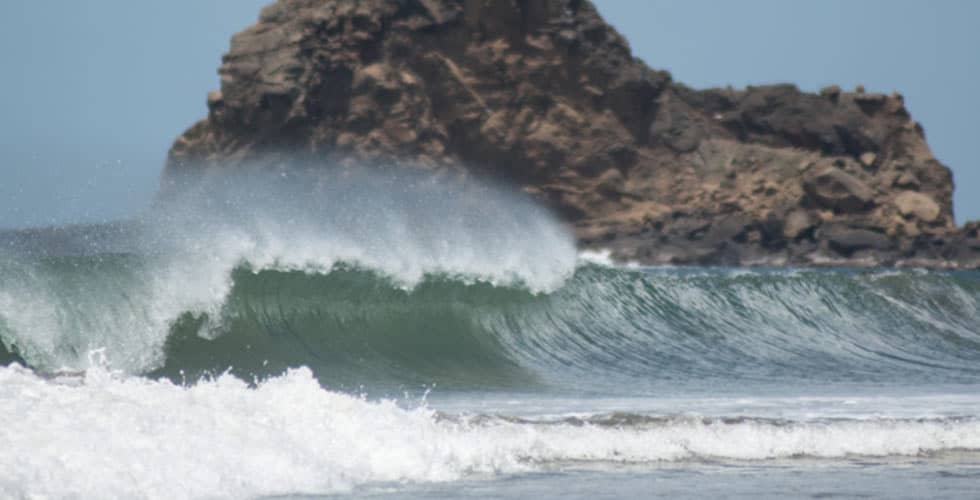
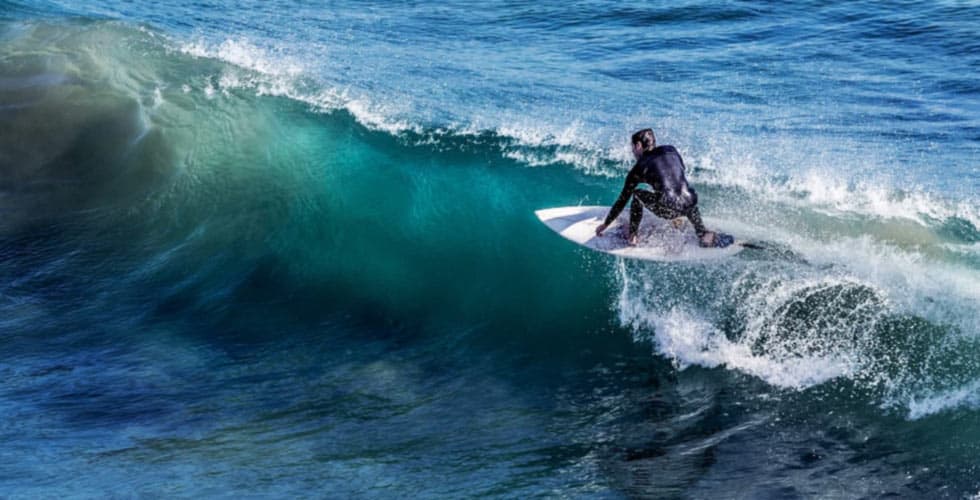


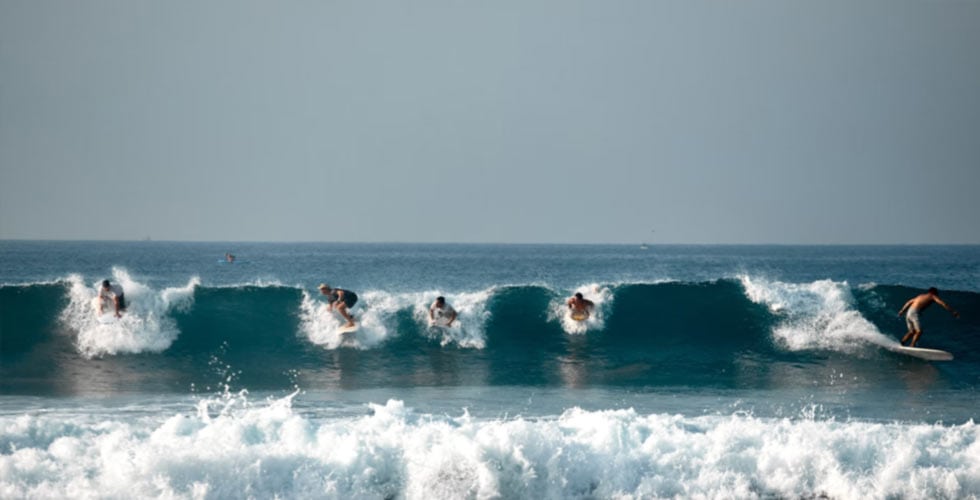

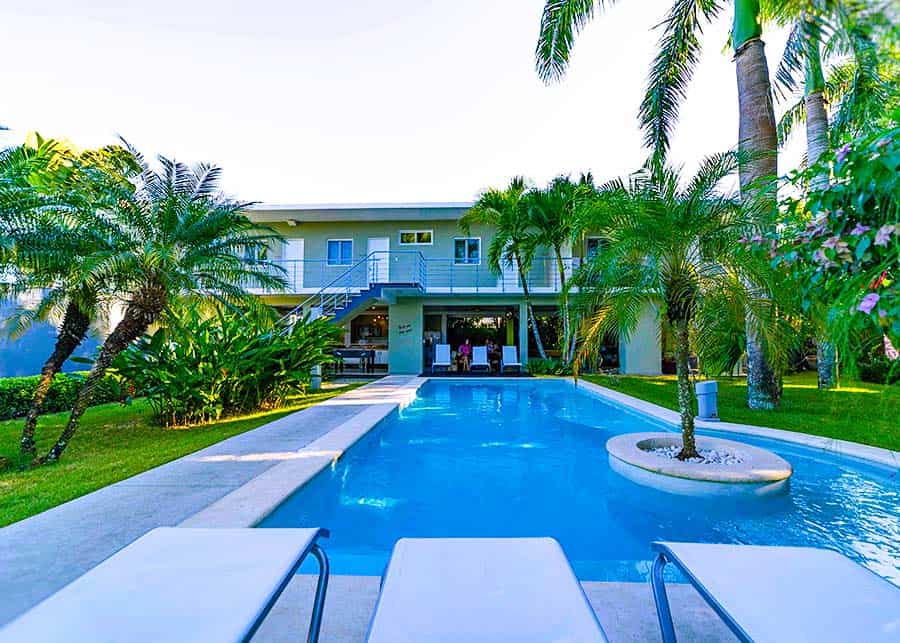

 Perhaps you are all thinking about a family beach vacation; most family holidays understandably involve the beach, who wouldn’t want to be on a sandy beach with their family?
Perhaps you are all thinking about a family beach vacation; most family holidays understandably involve the beach, who wouldn’t want to be on a sandy beach with their family? Being able to
Being able to  So if you have a child or children who are 8 years old and up, who can already swim (we teach in warm, shallow water, but being able to swim is essential) and would like to plan a family surf vacation at Swell surf camp in summer 2019, do get in touch with us.
So if you have a child or children who are 8 years old and up, who can already swim (we teach in warm, shallow water, but being able to swim is essential) and would like to plan a family surf vacation at Swell surf camp in summer 2019, do get in touch with us.
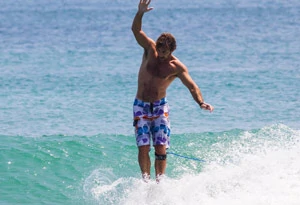 combines a long-standing passion for surfing with a commitment to creating a welcoming and supportive environment for guests.
combines a long-standing passion for surfing with a commitment to creating a welcoming and supportive environment for guests.

 Graduate of Tourism, Hospitality and Marketing
Graduate of Tourism, Hospitality and Marketing I was born in Nagua but I grew up in Cabarete. I have two younger brothers who currently live with my parents in Nagua and I really like to visit them and have a good time with them. It’s really pretty where I’m from, but there’s is not a lot to do in the countryside and the surf spot is far, so that’s why I prefer Cabarete.
I was born in Nagua but I grew up in Cabarete. I have two younger brothers who currently live with my parents in Nagua and I really like to visit them and have a good time with them. It’s really pretty where I’m from, but there’s is not a lot to do in the countryside and the surf spot is far, so that’s why I prefer Cabarete. With a musical family, I grew up playing guitar and worked as a professional singer for a few years before turning to property development. I was late to get involved in watersports and started kitesurfing at 39 years old and surfing at 52! (it’s never too late!). Jeroen and I met whilst kitesurfing in the Dominican Republic and have been together since 2006. We built Swell because Jeroen has taken me to some pretty dreadful surf camps / hotels and resorts over the years and I wanted to do something for the long-suffering surf wives! I’m a terrible dancer and I’m passionate about dogs and have to be preventing from rescuing more than we can handle. Favorite song; Don’t Give Up (Peter Gabriel/Kate Bush).
With a musical family, I grew up playing guitar and worked as a professional singer for a few years before turning to property development. I was late to get involved in watersports and started kitesurfing at 39 years old and surfing at 52! (it’s never too late!). Jeroen and I met whilst kitesurfing in the Dominican Republic and have been together since 2006. We built Swell because Jeroen has taken me to some pretty dreadful surf camps / hotels and resorts over the years and I wanted to do something for the long-suffering surf wives! I’m a terrible dancer and I’m passionate about dogs and have to be preventing from rescuing more than we can handle. Favorite song; Don’t Give Up (Peter Gabriel/Kate Bush).
 I still love to Windsurf when the wind is over 20 knots and the waves are solid at Cabarete reef, but my main passion is surfing.
I still love to Windsurf when the wind is over 20 knots and the waves are solid at Cabarete reef, but my main passion is surfing.

 How about combining a few days of surfing or kiteboarding in a sporty, vibrant town like Cabarete, with a few days in the oh-so-peaceful La Terrenas, and even a couple of days in the Zona Colonial for some culture in the capital city, Santo Domingo? Or perhaps a hiking tour up Pico Duarte, followed by a truly relaxing few days on a deserted beach like Punta Rucia. Whatever you plan, be sure to get the very best out of this interesting, beautiful and diverse country.
How about combining a few days of surfing or kiteboarding in a sporty, vibrant town like Cabarete, with a few days in the oh-so-peaceful La Terrenas, and even a couple of days in the Zona Colonial for some culture in the capital city, Santo Domingo? Or perhaps a hiking tour up Pico Duarte, followed by a truly relaxing few days on a deserted beach like Punta Rucia. Whatever you plan, be sure to get the very best out of this interesting, beautiful and diverse country. Several Dominican companies run these fun ATV tours around various parts of the island. You will find one close to any tourist area like Puerto Plata, Punta Cana, Samana, etc. Many combine the fun of driving these 4×4 open vehicles with a little local culture, such as driving through the sugar cane fields or visiting local coffee growers.
Several Dominican companies run these fun ATV tours around various parts of the island. You will find one close to any tourist area like Puerto Plata, Punta Cana, Samana, etc. Many combine the fun of driving these 4×4 open vehicles with a little local culture, such as driving through the sugar cane fields or visiting local coffee growers. With mountains come canyons and rivers and the Dominican Republic has more than its fair share of both.
With mountains come canyons and rivers and the Dominican Republic has more than its fair share of both. Caribbean Sea (East and South coast), the Dominican Republic enjoys some beautiful, turquoise water, abundant with fish and corals.
Caribbean Sea (East and South coast), the Dominican Republic enjoys some beautiful, turquoise water, abundant with fish and corals. In the Samana region, about half an hour from Las Terrenas, you will find El Limón waterfall. This trip is less extreme than the canyoning mentioned previously, or the 27 waterfalls (27 Charcos) we will mention later in this article.
In the Samana region, about half an hour from Las Terrenas, you will find El Limón waterfall. This trip is less extreme than the canyoning mentioned previously, or the 27 waterfalls (27 Charcos) we will mention later in this article. We’ve already mentioned that the Dominican Republic is home to Pico Duarte, the tallest mountain in the Caribbean at 3098m high. If you are a fit and regular walker, this is a great choice to see the magnificent interior of the island.
We’ve already mentioned that the Dominican Republic is home to Pico Duarte, the tallest mountain in the Caribbean at 3098m high. If you are a fit and regular walker, this is a great choice to see the magnificent interior of the island. All tourist regions offer horse-back riding tours from several sources.
All tourist regions offer horse-back riding tours from several sources. Bay are full of the beautiful multi-coloured kites as they glide effortlessly through the water.
Bay are full of the beautiful multi-coloured kites as they glide effortlessly through the water. Gri Gri is formed from a natural spring, but after an earthquake in 1952, the subterranean water rose up and formed a lagoon. Named after the Gri-Gri tree which grows in abundance in the surrounding mangrove forrest, tours go by boat through the lagoon, taking in the caves where thousands of Swallows nest. The boats often have glass bottoms, so you can really appreciate the quite incredible colour of the water beneath you.
Gri Gri is formed from a natural spring, but after an earthquake in 1952, the subterranean water rose up and formed a lagoon. Named after the Gri-Gri tree which grows in abundance in the surrounding mangrove forrest, tours go by boat through the lagoon, taking in the caves where thousands of Swallows nest. The boats often have glass bottoms, so you can really appreciate the quite incredible colour of the water beneath you. Opened as a way to fund urgent free medical care for Haitians and Dominicans who previously had no access to any medical care, the Monkey Jungle is now a firm favorite on the North coast (base yourself in Cabarete or Sosua for this adventure).
Opened as a way to fund urgent free medical care for Haitians and Dominicans who previously had no access to any medical care, the Monkey Jungle is now a firm favorite on the North coast (base yourself in Cabarete or Sosua for this adventure). them most Sundays.
them most Sundays. Traditionally a popular beach for locals every Sunday, this stunning beach is bordered by fisherman’s huts/restaurants. As soon as you arrive, you’ll be offered a simple table and chairs beneath the palm trees and delicious, BBQ’d fresh catch of the day.
Traditionally a popular beach for locals every Sunday, this stunning beach is bordered by fisherman’s huts/restaurants. As soon as you arrive, you’ll be offered a simple table and chairs beneath the palm trees and delicious, BBQ’d fresh catch of the day. to Cabarete, has a stunning bay and snorkelling trips are leaving from the bay for a short trip to the reefs in front of the beach. Merlin dive centre are one of the companies who will organise a local boat to take you into the bay to where you will be able to swim with and feed the fish. If you are staying in Puerto Plata or in Punta Cana, your resort hotel will have a list of the companies they use for their snorkelling trips.
to Cabarete, has a stunning bay and snorkelling trips are leaving from the bay for a short trip to the reefs in front of the beach. Merlin dive centre are one of the companies who will organise a local boat to take you into the bay to where you will be able to swim with and feed the fish. If you are staying in Puerto Plata or in Punta Cana, your resort hotel will have a list of the companies they use for their snorkelling trips.
 The Caribbean side (Punta Cana, Casa de Campo, etc) is flat pretty much year-round, so if you are coming to the Dominican Republic to surf, you must head to the North. In this regard, if you are a surfer, fly to Puerto Plata (POP) and not to Punta Cana (PUJ) as it takes 6 hours to drive north from PUJ.
The Caribbean side (Punta Cana, Casa de Campo, etc) is flat pretty much year-round, so if you are coming to the Dominican Republic to surf, you must head to the North. In this regard, if you are a surfer, fly to Puerto Plata (POP) and not to Punta Cana (PUJ) as it takes 6 hours to drive north from PUJ. We’ve already spoke about the canyoning trips, but there’s another amazing waterfall experience close to Puerto Plata on the North coast. The 27 Waterwalls (local name, 27 Charcos), is a breathtakingly beautiful hike, walking up no less than 27 linking waterfalls and then descending by sliding and jumping.
We’ve already spoke about the canyoning trips, but there’s another amazing waterfall experience close to Puerto Plata on the North coast. The 27 Waterwalls (local name, 27 Charcos), is a breathtakingly beautiful hike, walking up no less than 27 linking waterfalls and then descending by sliding and jumping. In fact, if you stay anywhere on the North coast, whales will be visible to the naked eye from the shore during the whale mating season, especially during January and February, as they pass by on their way to Samana.
In fact, if you stay anywhere on the North coast, whales will be visible to the naked eye from the shore during the whale mating season, especially during January and February, as they pass by on their way to Samana. You will find many Yoga studios in the Dominican Republic. Cabarete has 3 or 4 different venues for Yoga, including a
You will find many Yoga studios in the Dominican Republic. Cabarete has 3 or 4 different venues for Yoga, including a 




 Puerto Plata in late September (dates can vary).
Puerto Plata in late September (dates can vary). When: August 16th
When: August 16th

























 Anyone planning a trip to the Caribbean should put this place firmly on their shortlist and this article will list the many reasons why you should visit the Dominican Republic.
Anyone planning a trip to the Caribbean should put this place firmly on their shortlist and this article will list the many reasons why you should visit the Dominican Republic. UNESCO World Heritage Site of the Zona Colonial in the capital, Santo Domingo. This is where Christopher Columbus arrived in the 15th century, where he lived for long periods and where at least some of his bones were finally buried.
UNESCO World Heritage Site of the Zona Colonial in the capital, Santo Domingo. This is where Christopher Columbus arrived in the 15th century, where he lived for long periods and where at least some of his bones were finally buried. 

 It’s hard to argue with most visitors describing this trip as the BEST thing they did on their vacation to the Dominican Republic. These intricate canyons and waterfalls were formed by water cascading down the mountainous region behind the city of Puerto Plata for millions of years. Formerly run with some dubious safety procedures, the intervention of JFK’s great-nephew (of all people) lead to grants being provided to seriously upgrade and improve all safety aspects of this amazing adventure. You can choose to climb all 27 falls or stop at 12. Note though that some of the jeep safaris from the all-inclusive hotels will only take you to the 7th waterfall, so if you are fit and up for a challenging and spectacular adventure, get yourself to the visitor centre independently and take a guide up with you.
It’s hard to argue with most visitors describing this trip as the BEST thing they did on their vacation to the Dominican Republic. These intricate canyons and waterfalls were formed by water cascading down the mountainous region behind the city of Puerto Plata for millions of years. Formerly run with some dubious safety procedures, the intervention of JFK’s great-nephew (of all people) lead to grants being provided to seriously upgrade and improve all safety aspects of this amazing adventure. You can choose to climb all 27 falls or stop at 12. Note though that some of the jeep safaris from the all-inclusive hotels will only take you to the 7th waterfall, so if you are fit and up for a challenging and spectacular adventure, get yourself to the visitor centre independently and take a guide up with you. 

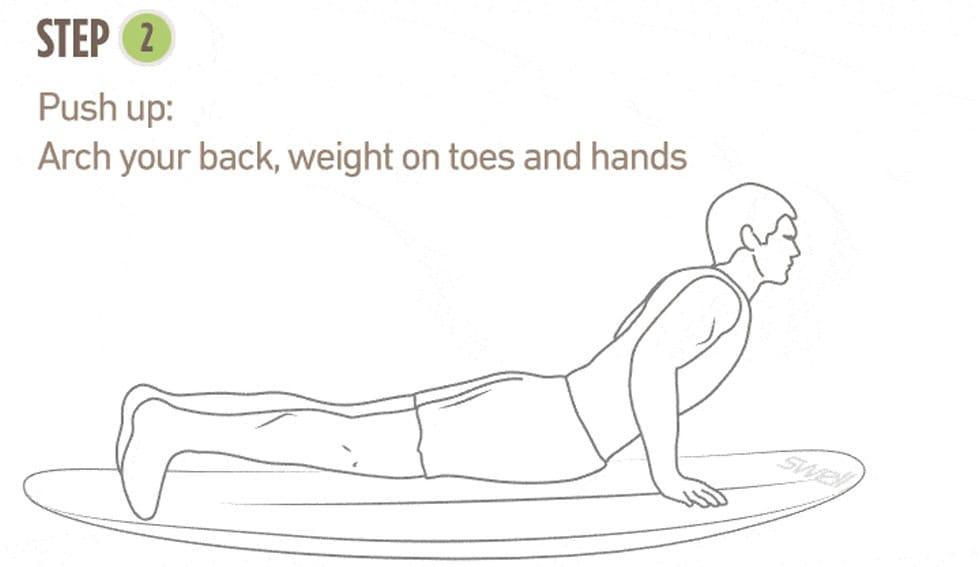
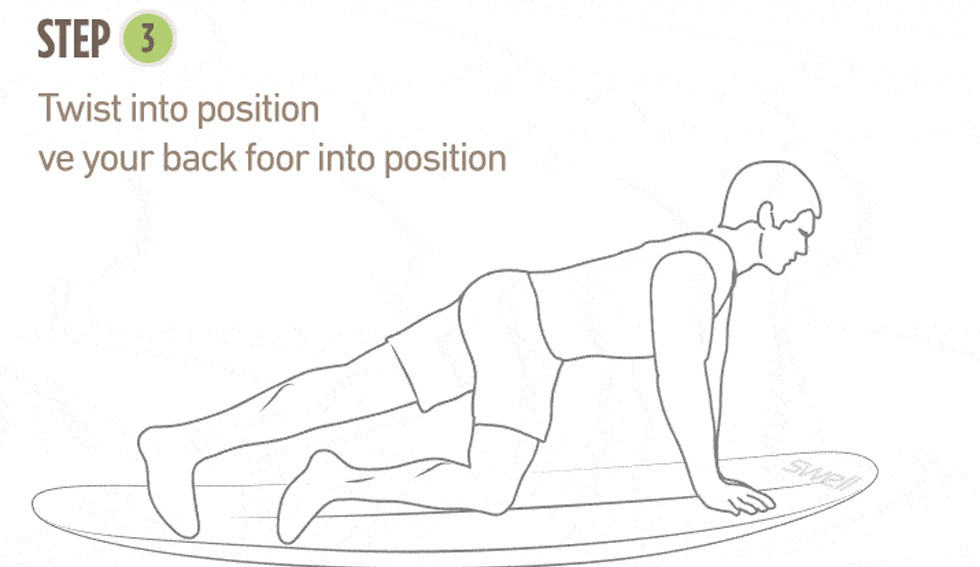
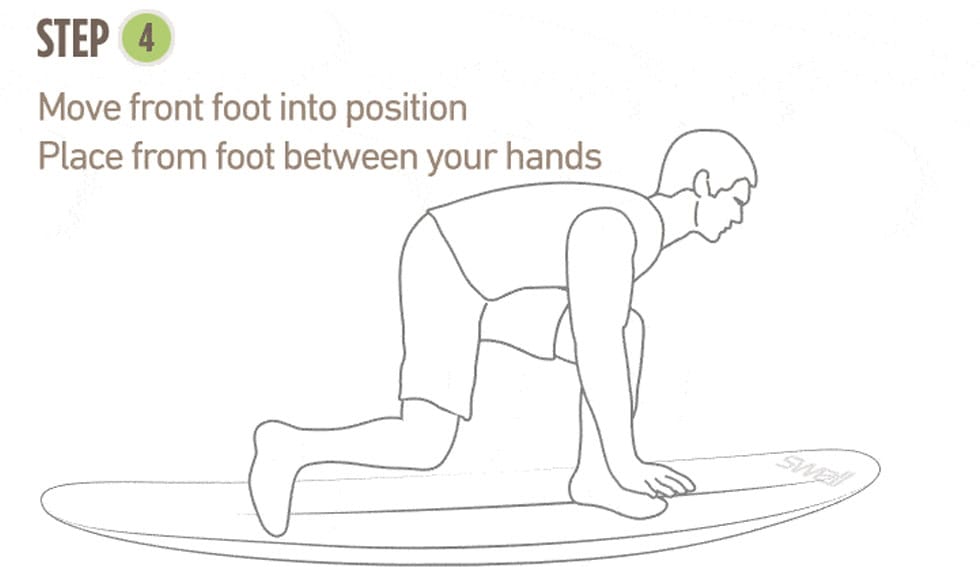



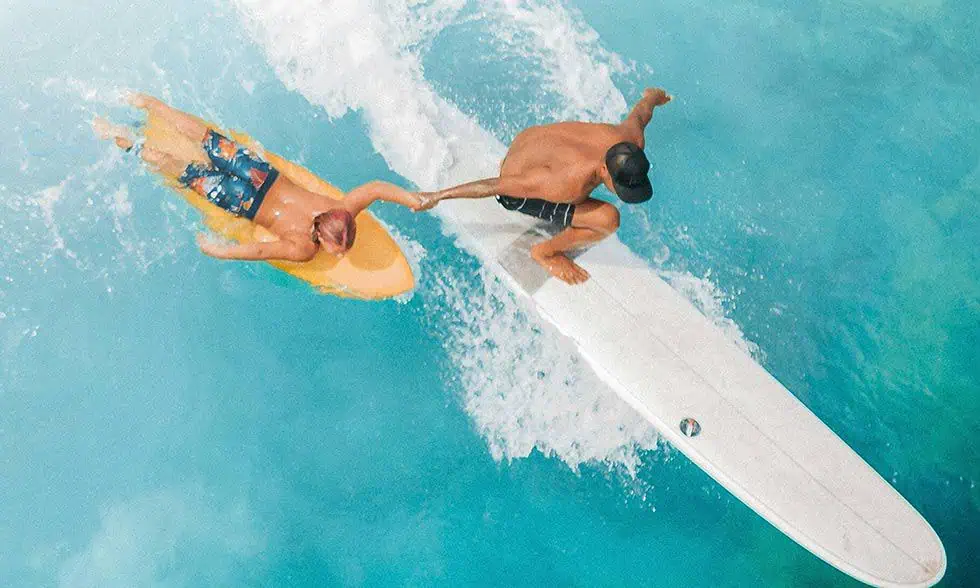




 Cabarete has the most ideal and consistent beginner surf conditions anywhere in the world. With warm water year round and ideal wave conditions for getting your first rides on a surfboard, Swell surf camp in the centre of Cabarete is one of the best
Cabarete has the most ideal and consistent beginner surf conditions anywhere in the world. With warm water year round and ideal wave conditions for getting your first rides on a surfboard, Swell surf camp in the centre of Cabarete is one of the best  Along with great surf conditions for beginners, Cabarete also enjoys near-perfect kite-boarding conditions. The wind picks up in the afternoon generally and is side-on, which is one of the reasons why
Along with great surf conditions for beginners, Cabarete also enjoys near-perfect kite-boarding conditions. The wind picks up in the afternoon generally and is side-on, which is one of the reasons why  Just 10 minutes from Cabarete is the pretty bay of Sosua, where you will find some really professional diving schools. Schools like TSM can get you accredited from scratch with a PADI dive course. If you don’t want to dive, they will also take you out to snorkel in the bay of Sosua, which is jam-packed with pretty fish to swim with along areas of reef.
Just 10 minutes from Cabarete is the pretty bay of Sosua, where you will find some really professional diving schools. Schools like TSM can get you accredited from scratch with a PADI dive course. If you don’t want to dive, they will also take you out to snorkel in the bay of Sosua, which is jam-packed with pretty fish to swim with along areas of reef.  The Dominican Republic is bursting at the seams with mountains and rivers. You may not know but it is home to the highest peak in the Caribbean region, Pico Duarte, which is over 3000m high. These mountains and rivers create some amazing canyons and caves, so beautiful they will take your breath away.
The Dominican Republic is bursting at the seams with mountains and rivers. You may not know but it is home to the highest peak in the Caribbean region, Pico Duarte, which is over 3000m high. These mountains and rivers create some amazing canyons and caves, so beautiful they will take your breath away.  Swell has been voted
Swell has been voted  We opened in winter 2009/2010 to create a boutique luxury surf camp experience whilst having the comforts of a surf hotel. Located right in the center of Cabarete, minutes walk from cabarete main beach.
We opened in winter 2009/2010 to create a boutique luxury surf camp experience whilst having the comforts of a surf hotel. Located right in the center of Cabarete, minutes walk from cabarete main beach.






 We are also very proud and happy to announce that we have partnered up with Inspire DR, A US non-profit organisation based just a 100 yards from where Swell is based. Inspire teaches young Dominican and Haitian boys essential skills to become the community leaders of the future.
We are also very proud and happy to announce that we have partnered up with Inspire DR, A US non-profit organisation based just a 100 yards from where Swell is based. Inspire teaches young Dominican and Haitian boys essential skills to become the community leaders of the future.
 Before we opened Swell we had visited many surf camps around the world (we used to run a successful surf travel company).At a lot of those surf camps in Costa Rica, Nicaragua, Panama and Bali we saw practises that were not very beneficial for the students that wanted to learn to surf
Before we opened Swell we had visited many surf camps around the world (we used to run a successful surf travel company).At a lot of those surf camps in Costa Rica, Nicaragua, Panama and Bali we saw practises that were not very beneficial for the students that wanted to learn to surf

